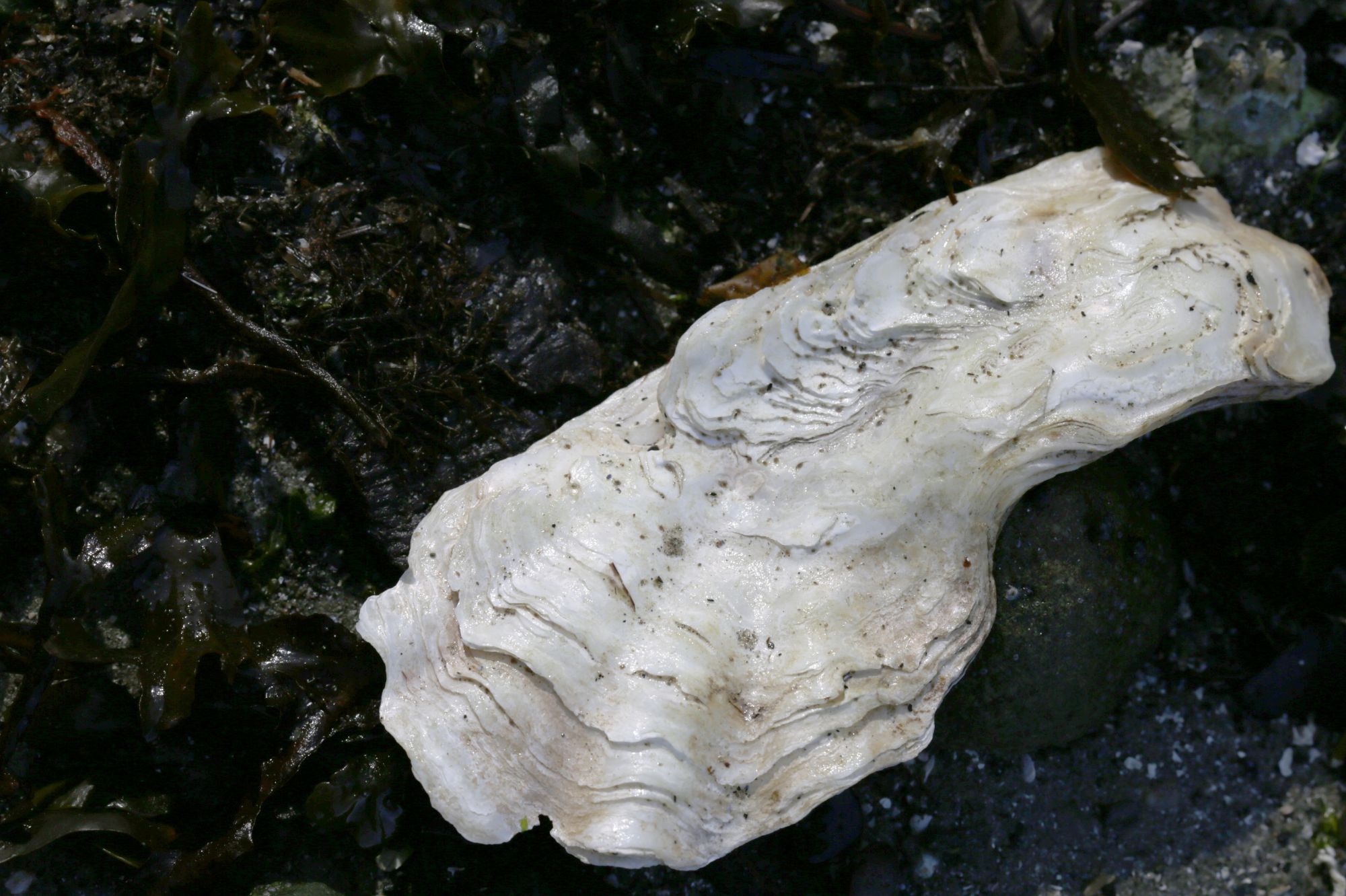Story
National Oyster Day - but not all oysters are welcome...
04 August 2025
Today (5th August) is National Oyster Day, but not all oysters are welcome. Discover PML’s research on the Pacific Oyster – Crassostrea gigas – in Europe, an invasive species with a potent harmful impact.

The Pacific oyster – also known as the Japanese oyster or Miyagi oyster – is indigenous to the Northwest Pacific Coast, but the species has been introduced across 73 countries worldwide due to their commercial value in aquaculture. However, whether through accidental aquaculture release, spread through ballast water, or other means, populations of wild Pacific oysters are growing across Europe.
Pacific oysters reproduce rapidly and can form biogenic reefs, introducing non-native diversities, services and food items. These reefs may block access to sediment used by other species for foraging, displacing or altering the original community structure. As a result, the unmanaged spread of Pacific oysters can lead to a reduction in the number of prey for different species of birds and fish, altering the balance of habitats and provoking the loss of original species in intertidal areas.
As such, there is an urgent need for continuous monitoring to detect and manage the advance of Pacific oysters, ideally at early stages of colonisation – before a tipping point is reached and large aggregates are formed.
However current methods of monitoring populations involve “walk-over” surveys that are highly laborious, time-consuming, and often limited to specific areas of easy access – which could mean potentially incomplete or inaccurate data.
To address this problem, PML’s Earth Observation Scientist Aser Mata led a study trialing the use of Remotely Piloted Aircraft Systems (RPAS) – commonly known as drones – for navigating and surveying complex terrains to detect Pacific oysters. The study provided a novel workflow for the automated detection, counting and mapping of individual Pacific oysters to estimate their density per square meter by using deep learning applied to drone imagery. Find out more: ‘Using drone footage to map invasive species: managing the expansion of wild Pacific oysters’ >>
And, how will climate change affect the spread of Pacific oysters in Europe? PML’s Ecosystem Modeller Dr Robert Wilson led a paper investigating the expansion of the non-native Pacific oysters in a hotter Europe, considering the varying possible climate scenarios that we may face in the future. Find out more: ‘Non-native species in a hotter Europe: predicting the future spread of Pacific oysters’ >>
